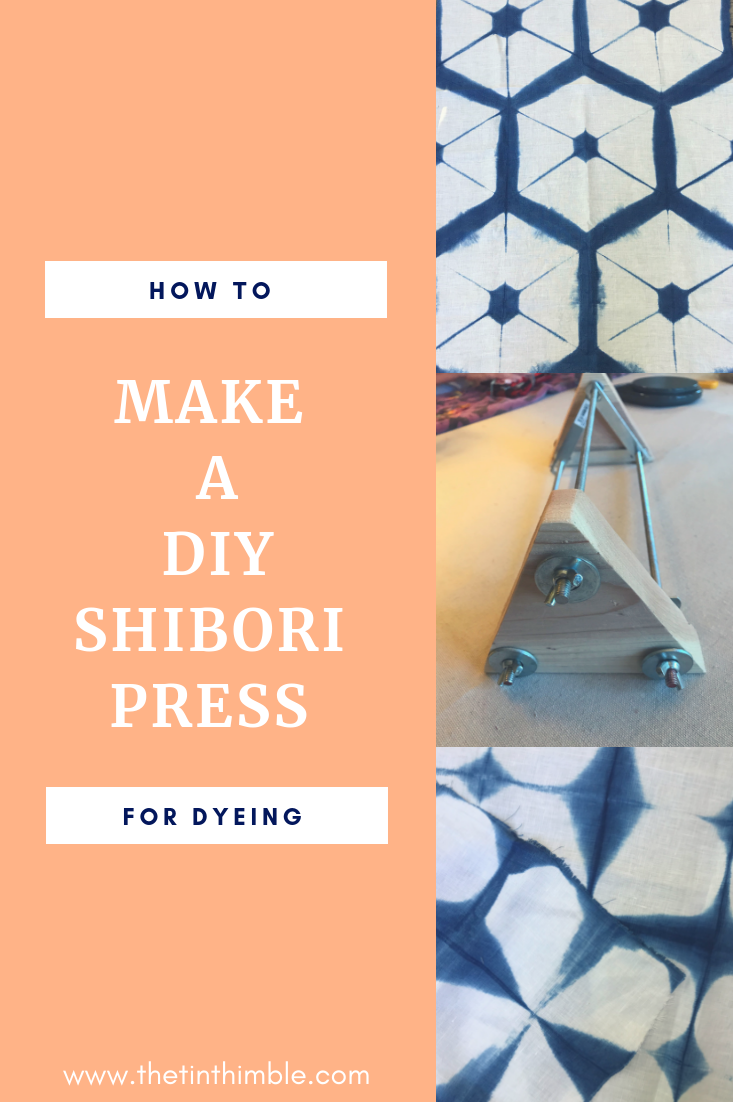
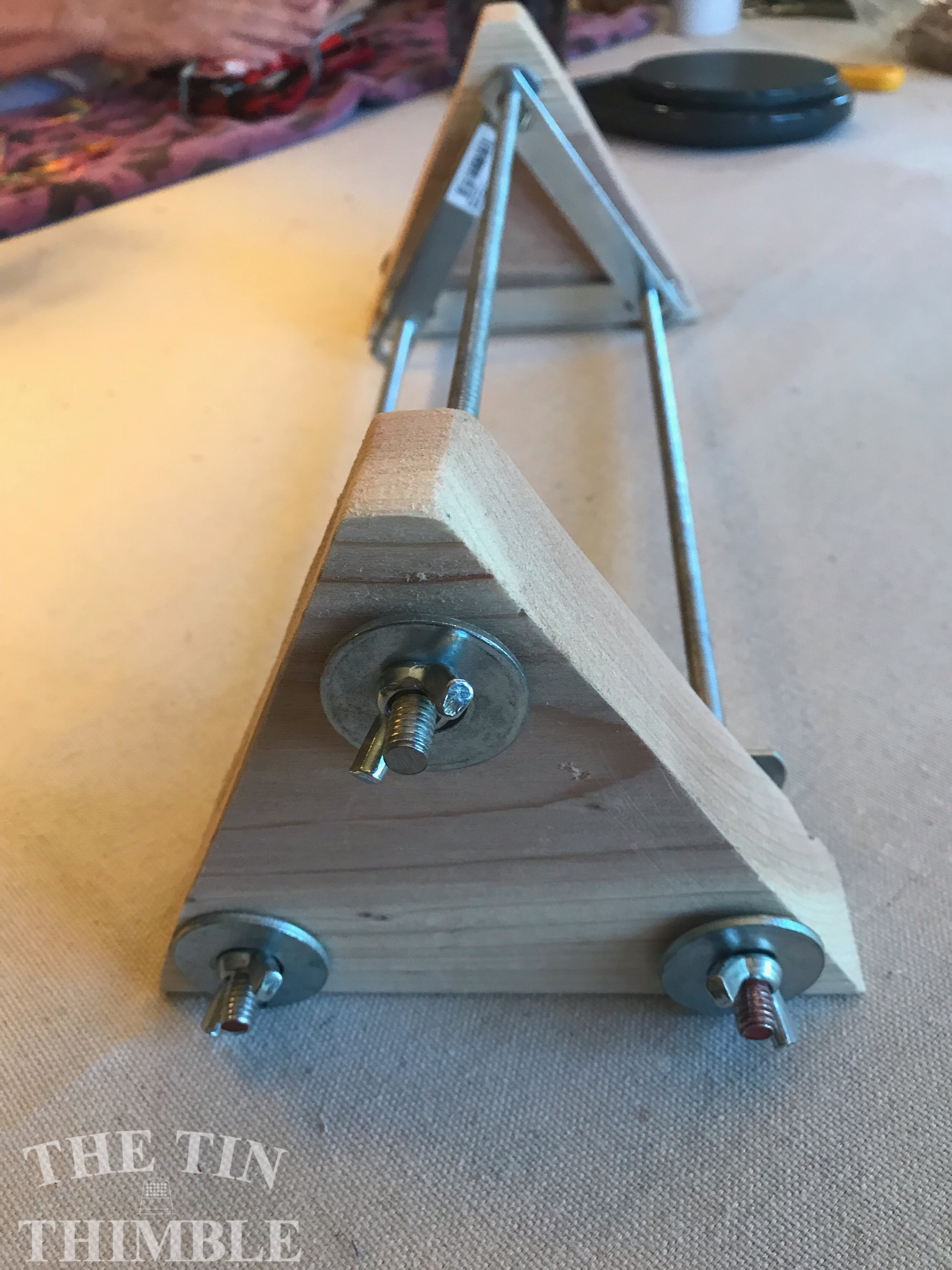
Those of you who follow us on Instagram, or keep a close eye on the shop going-ons, know that Sharon has been on a bit of a Shibori and Indigo kick lately. Dare we say, she’s a bit…obsessed? It’s okay, cause we’re fueling her obsession by asking her ten thousand questions about indigo, encouraging her to sell her indigo dyed yardage and showing the indigo vat to anyone and everyone who stumbles into the shop.
She told us she wanted to make a shibori press that would make it possible for her to dye many, many yards at a time, so we rolled up our sleeves and asked her, “What do you need?”. Several trips to the hardware store and a favor to our father later, she had her press.
Using all-thread, wing nuts, washers, braces, and two triangular pieces of wood, Sharon constructed this super cool shibori press!
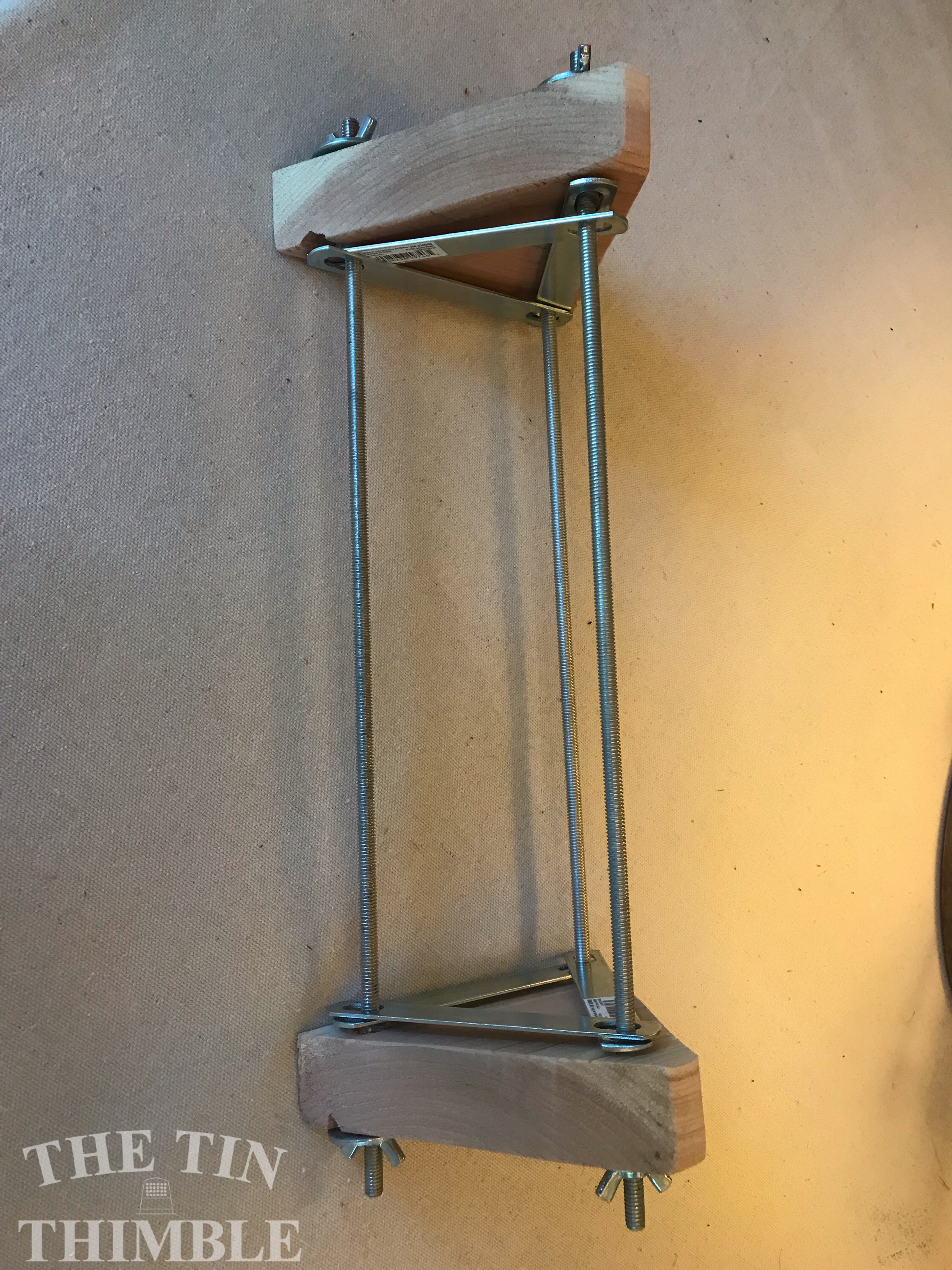
Below, you can see it full of folded fabric, squeezed tight and ready to be dyed!
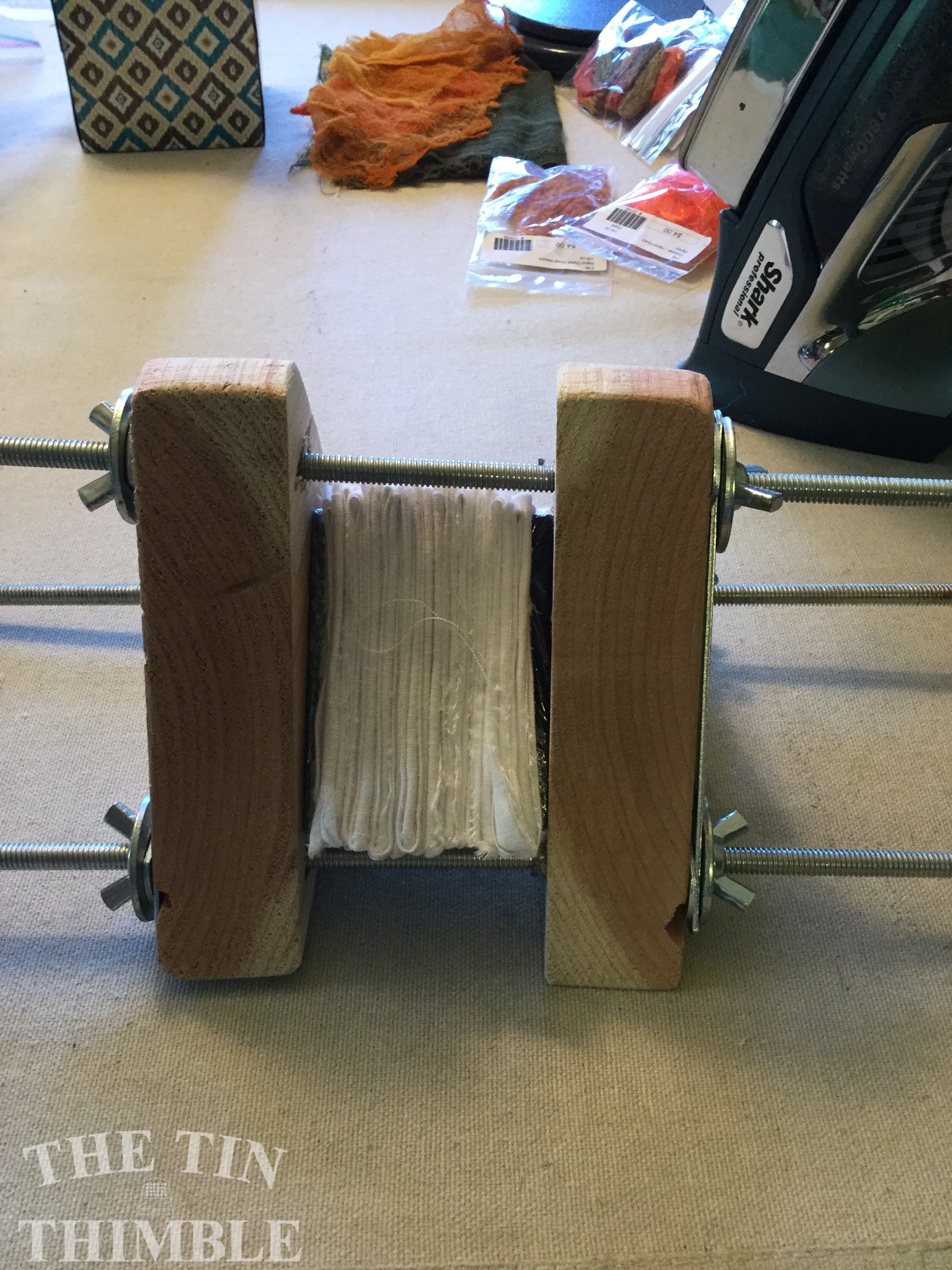
After 20 minutes in the indigo vat, she revealed her first experimental piece to us…
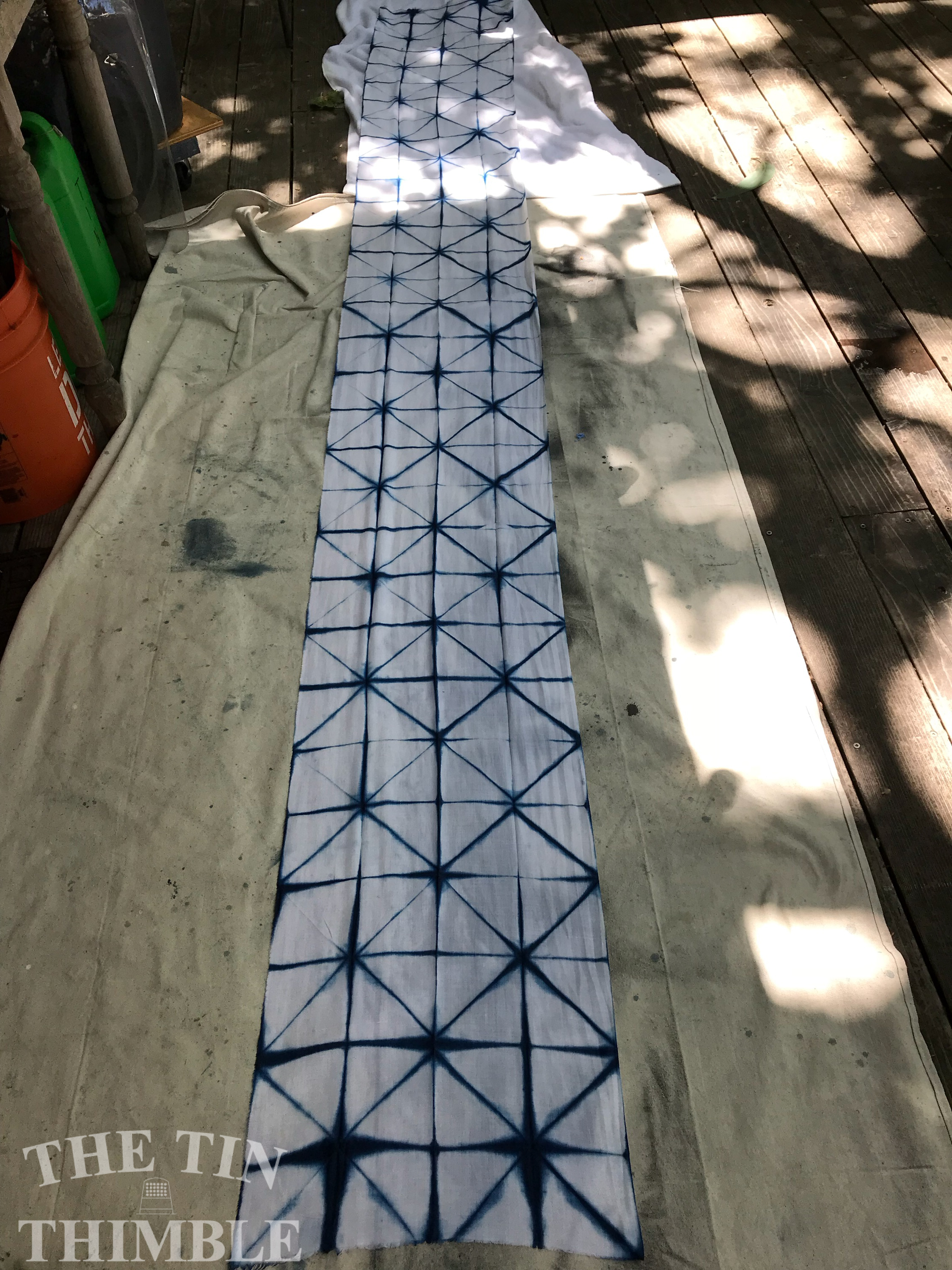
…and we clapped with excitement. The press did exactly what she wanted it to! This is 3 yards of light weight linen fabric that is 15″ inches wide. The fabric has been folded in a triangular shibori pattern.
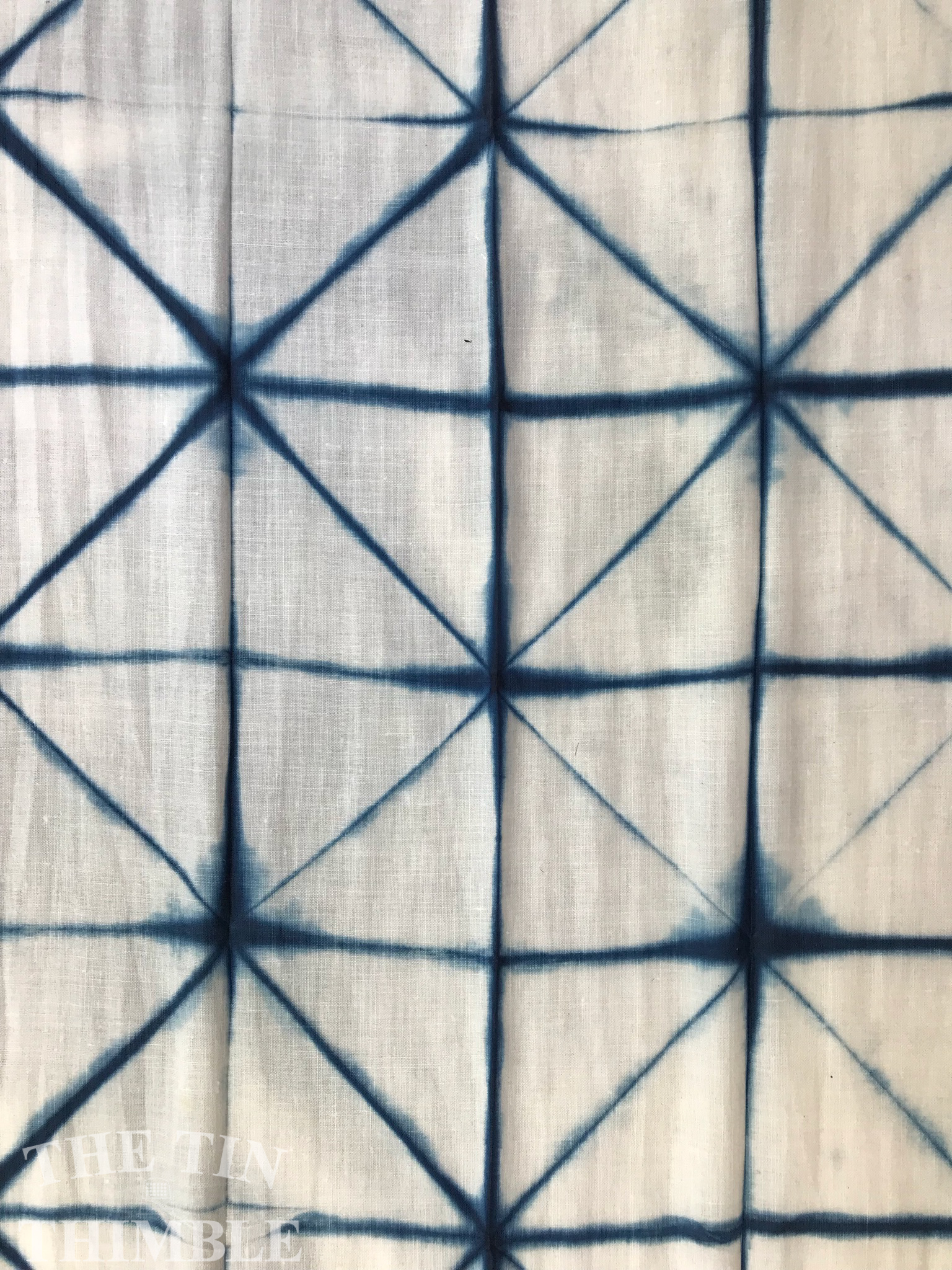
Want to make your own press? Here’s what you’ll need:
- 3 pieces of “all-thread”, Sharon’s were about 18″ long
- 6 adjustable braces. Sharon’s found these in the gates & fencing department.
- 6 wing nuts
- 6 larger washers
- 6 smaller washers
- 2 triangular pieces of wood with holes drilled into them where the all-thread will pass through.
Interested in learning more about indigo and shibori? We have several workshops coming up in both subjects! Be sure to check them out and register before they fill. Give us a call at 916-652-2134 to register or ask questions.
Any questions about the press, how to construct it, or how to use it? Comment below!

What a great tool! Before I go to the hardware store to get the supplies to make one, I have a few questions:
Do the wood blocks on the ends also get submerged into the dye in the vat? I was wondering if they should be coated with some sort of protectant (varathane, etc.) to avoid color transfer.
Are the wood pieces a triangular shape because the shape of the folds was triangular or is there some other reason for the shape?
Many Thanks,
Cheryl Wical
Hello Cheryl!
Great questions. Thank you for asking. Sharon says “The wood blocks can be square. I was experimenting with the triangular shape and I thought that’s what I wanted. They can really be any shape, as long as the piece you’ll use as a resist will fit inside the perimeter of the press block ends. Marine varnish will help perserve the wood and, yes, it all goes in the vat.” If you follow us on Facebook or Instagram, please share your finished press with us! Sharon would love to see how yours turns out.
I’m very impressed with the new Shibori tool! I wondered if you had tried dyeing a heavier weight fabric such as Kona PFD? If so did it require a smaller piece of fabric? I will look forward to seeing more examples of your dyeing experiments. Thank you for sharing.
Thank you, Shelly. She did experiment with heavier fabrics, and yes, you do have to use smaller pieces if you want nice, crisp edges. We’ll keep sharing! Thanks for reading and commenting.